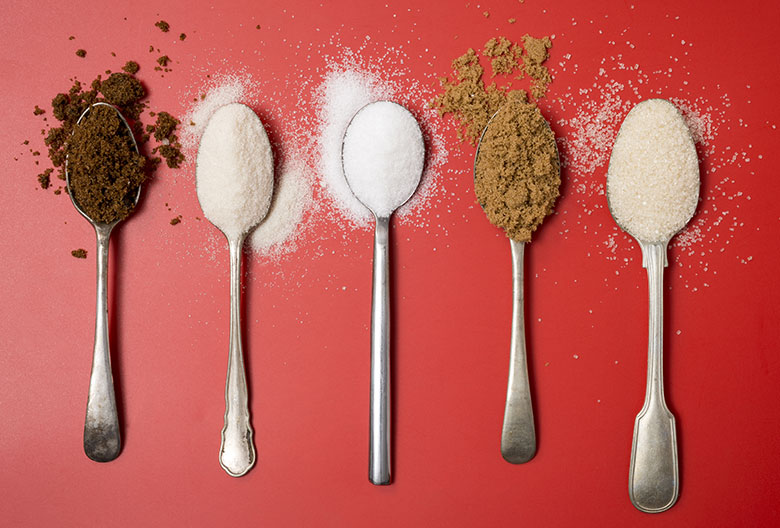- Added sugars do not occur naturally in foods and beverages but are added in processing or preparation.
- The American Heart Association recommends limiting added sugars to 100 kcals/day (20 grams of sugar/day) for women and 150 kcals/day (30 grams of sugar/day) for men.
- To reduce the intake of added sugars, consume fresh and whole foods, especially fruits and vegetables, while limiting the amount of processed and packaged foods.
How can I identify added sugars?
Added sugars or syrups do not occur naturally in foods or beverages but are added during processing or preparation to enhance flavor, balance acidity, give texture and color, fuel fermentation, and increase shelf life.
Added sugars contribute calories to the diet but provide little nutritional value. The American Heart Association recommends limiting added sugars to 100 kcals/day (20 grams of sugar/day) for women and 150 kcals/day (30 grams of sugar/day) for men. Added sugars have many aliases and that made it to the difficult to track these empty calories until recently, with an announcement of positive changes to the nutrition facts label.
New food label
The FDA has recently mandated new food labeling requirements for most packaged foods sold in the US that will, for the first time, list added sugar. This is a welcome and important change that will help people make informed decisions about the foods they eat and feed their families. We are not likely to see this implemented right away since the food industry must comply by 2018.
Bob Califf, M.D. the new FDA Commissioner said “For more than 20 years, Americans have relied on the Nutrition Facts label as a leading source of information regarding calories, fat and other nutrients to help them understand more about the foods they eat in a day -the updated label makes improvements to this valuable resource so consumers can make more informed food choices –one of the most important steps a person can take to reduce the risk of heart disease and obesity.” Tracking added sugars will help the more than 50% of Americans with problems with insulin resistance -the condition that predisposes to prediabetes and type 2 diabetes.
Unfortunately, sugar often shows up under aliases and it may be difficult to identify the sweet stuff from the ingredient list especially when the word sugar is no where to be found,
Sugar aliases
- anhydrous dextrose
- agave nectare*
- brown sugar
- cane juice
- confectioner’s powdered sugar
- corn syrup
- corn syrup solids
- crystal dextrose
- dextrose
- evaporated corn sweetener
- fructose
- fruit juice concentrate
- fruit nectar
- glucose
- high fructose corn syrup (HFCS)
- honey
- lactose
- liquid fructose
- malt syrup
- maltose
- maple syrup
- molasses
- nectar
- sucrose
- sugar cane juice
- sugar
*A quick word about agave nectare obtained from the Agave plant commonly found in Mexico. Agave syrup is commonly marketed as a healthy natural sweetener given its low glycemic index -meaning it is less likely to spike blood sugar compared to glucose.
Do not be fooled by the hype of Agave masquerading as the healthy, natural sweetener. It contains about 85% fructose (nearly twice the amount of fructose as in HFCS).
Just like high amounts of HFCS found in most processed foods it may increase belly fat, worsen insulin resistance, blood pressure, uric acid and increase the risk for non-alcoholic fatty liver disease. The most common use of the Agave plant is the production of the alcoholic beverage called tequila by fermentation of agave nectar.
Summary
To reduce your intake of added sugars, try to consume more whole and fresh foods, especially fruits and vegetables. At the same time, limit processed and packaged foods and beverages. Choose reduced-sugar varieties of jams and jellies and use other condiments sparingly. Limit intake of packaged desserts and sweetened cereals, and drink plain water or flavored water instead of commercially prepared sweetened beverages.

